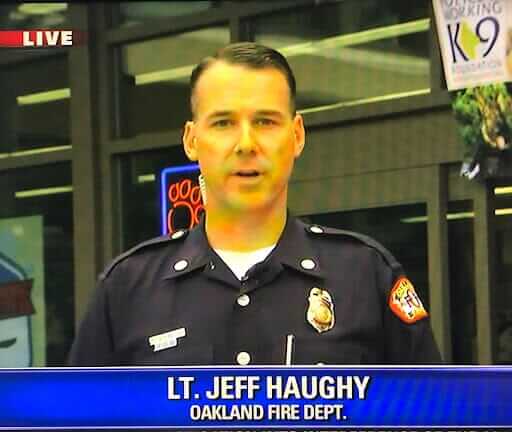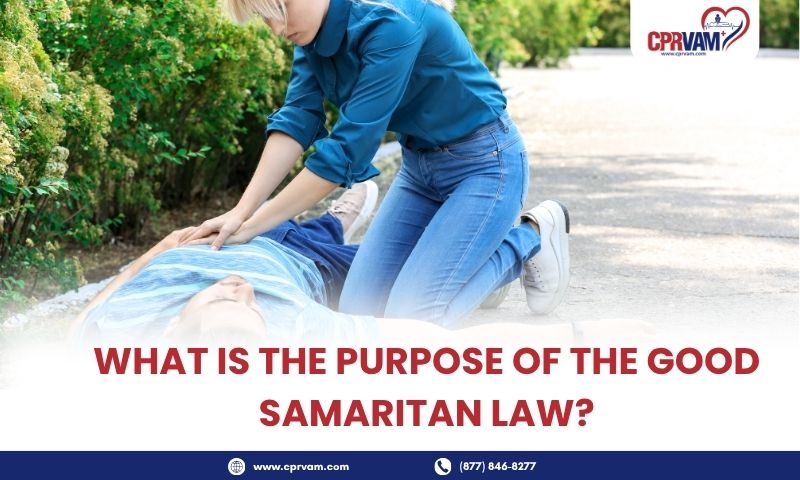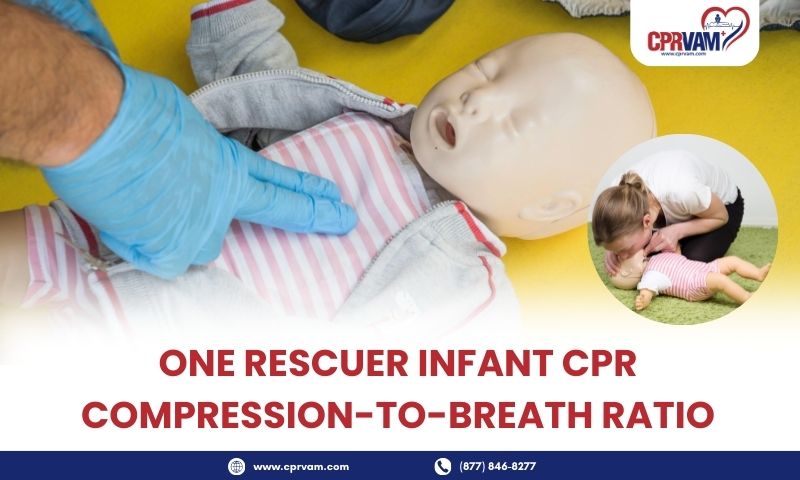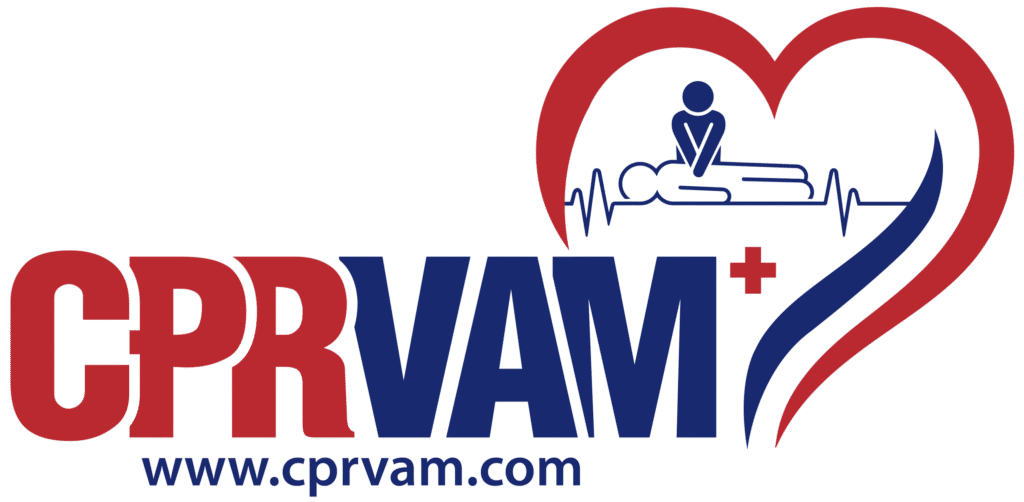Have you ever seen someone in an emergency and wanted to help but hesitated, worried about what might happen if things went wrong? The Good Samaritan Law was created to remove that fear. Its main purpose is to protect people who act in good faith to help others during emergencies, ensuring they’re not held legally responsible for honest mistakes.
This law encourages bystanders to take quick action, whether performing CPR, giving first aid, or calling for help, without worrying about lawsuits. In this blog, you will understand the definition of the Good Samaritan Law, and you’ll gain the confidence to step forward and possibly save a life when every second counts.
What is the Good Samaritan Law?
The Good Samaritan Law is a legal protection designed to encourage people to help others in emergencies. It ensures that if you offer assistance in good faith, such as performing high-quality CPR on cardiac arrest, heart attack, drowning, choking, or someone in an accident, you will not be held liable. When you provide first aid or call for emergency help, you won’t be held legally responsible for unintended outcomes.
In simple terms, this law protects ordinary citizens who act responsibly and without expectation of payment when trying to save a life. Its purpose is to remove hesitation and empower more people to take quick action during medical emergencies, creating a safer and more caring community.
When Was the Good Samaritan Law Started?
The concept of the Good Samaritan Law originated in the United States in the 1950s–1960s. It was introduced to encourage ordinary citizens to help people in emergencies without fear of being sued. Early versions of the law were created after research showed that many bystanders hesitated to assist due to fear of legal liability, which sometimes led to preventable deaths.
- 1960s: Several U.S. states began enacting their first Good Samaritan statutes.
- 1970s onward: The laws expanded and became more standardized, covering acts like CPR, first aid, and emergency assistance.
Today, most U.S. states and many countries worldwide have some form of Good Samaritan Law, often including protections for ordinary citizens, CPR-trained responders, and medical professionals like doctors, nurses, or EMS who act voluntarily in emergencies.
Purpose of the Good Samaritan Law in CPR and First Aid
The Good Samaritan Law protects you from legal consequences when you step in to help someone in an emergency. As long as you act in good faith, stay within your level of training, and don’t expect payment, you’re legally protected from most lawsuits or claims. This means that if you perform CPR, give first aid, or call for emergency assistance, you can do so confidently knowing the law supports your actions. These protections are designed to encourage quick, responsible action when every second matters.
Here are some key conditions that determine the Purpose of the Good Samaritan Law to safeguard you:
1. Good Samaritan Encourages Immediate CPR and First Aid
Cardiac arrest or heart attacks can occur suddenly, anytime, and anywhere, and in those critical moments, every second truly counts. Far too many lives are lost due to hesitation or delays in providing immediate care and effective chest compressions. According to research by the American Heart Association (AHA), nearly 436,000 cardiac arrest victims die each year outside of hospitals, emphasizing the urgent need for prompt CPR and first aid response to improve survival chances.
The Good Samaritan Law encourages bystanders to act quickly and selflessly during such emergencies. When you step in to help out of genuine concern, without expectation of reward or obligation, your actions are legally protected. This law ensures that compassionate, life-saving efforts like CPR and first aid are both encouraged and safeguarded.
2. Reduces hesitation during life-threatening situations
In emergencies such as choking, drowning, cardiac arrest, shock, or serious accidents, many people hesitate to act out of fear of doing something wrong, fear of breaking ribs while performing CPR, or facing legal consequences. Unfortunately, this hesitation can cost valuable time, and victims may lose their lives before emergency medical services (EMS) arrive.
The Good Samaritan Law helps remove that fear by protecting those who assist in good faith. But this only protects you when help is offered freely and without expecting payment or personal gain. If assistance is given for money or reward, this legal protection may not apply. The law ensures that your good-faith efforts to save a life are safeguarded, even if the outcome isn’t perfect. Its primary purpose is to encourage selfless, compassionate actions that put saving lives above personal benefit.
3. Protects actions taken in good faith
The Good Samaritan Law is designed to protect individuals who provide emergency assistance out of genuine concern and without expecting any reward. When you act with honest intentions, performing CPR, controlling bleeding, or offering first aid, your efforts are considered actions taken in good faith. Even if the outcome isn’t perfect, the law recognizes that your goal was to save a life, not to cause harm.
For example, during CPR, a rescuer might unintentionally break a rib or make common CPR mistakes while performing chest compressions, both of which can happen even when following proper technique. These actions are generally considered normal and acceptable during an effort to save a life. The Good Samaritan Law ensures that you are not held legally responsible for such unintended outcomes when acting in good faith. This protection empowers you to respond quickly and confidently, knowing that your genuine efforts to help are both appreciated and legally safeguarded.
4. Supports a compassionate, safety-minded community
The purpose of the Good Samaritan Law not only protects individual rescuers but also helps build a more caring and safety-conscious society. When people know they are legally protected for helping others in emergencies, they are more likely to step forward and provide CPR or first aid instead of waiting for professionals to arrive. This shared sense of responsibility strengthens community trust and ensures faster responses during life-threatening events.
By encouraging acts of kindness and preparedness, the law promotes a culture where compassion and safety come first, creating communities where everyone looks out for one another and is ready to save a life when every second counts.
Final Thoughts: Why Knowing the Good Samaritan Law Matters?
The Good Samaritan Law encourages a culture of compassion, responsibility, and quick action during emergencies. When you know that the law protects your good-faith intentions to save lives, you’re more likely to step in and provide help rather than hesitate in fear. Having the knowledge and skills to perform CPR or first aid can make the critical difference between life and death for a victim.
If you are looking for the best CPR training center near you, trust CPRVAM. We provide high-quality CPR training guided by experienced professionals who teach proper techniques using manikins and help you understand the full CPR algorithm. With our training, you’ll gain the confidence and skills to act effectively in an emergency and make a real difference.









